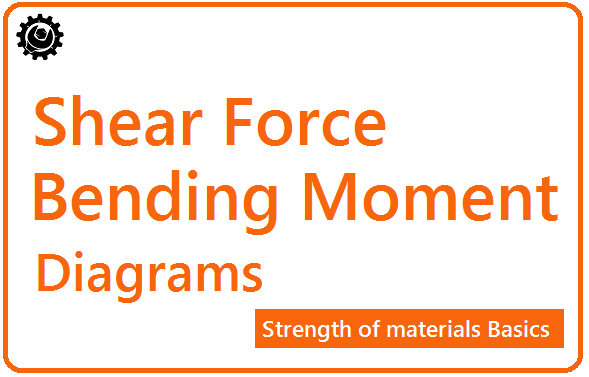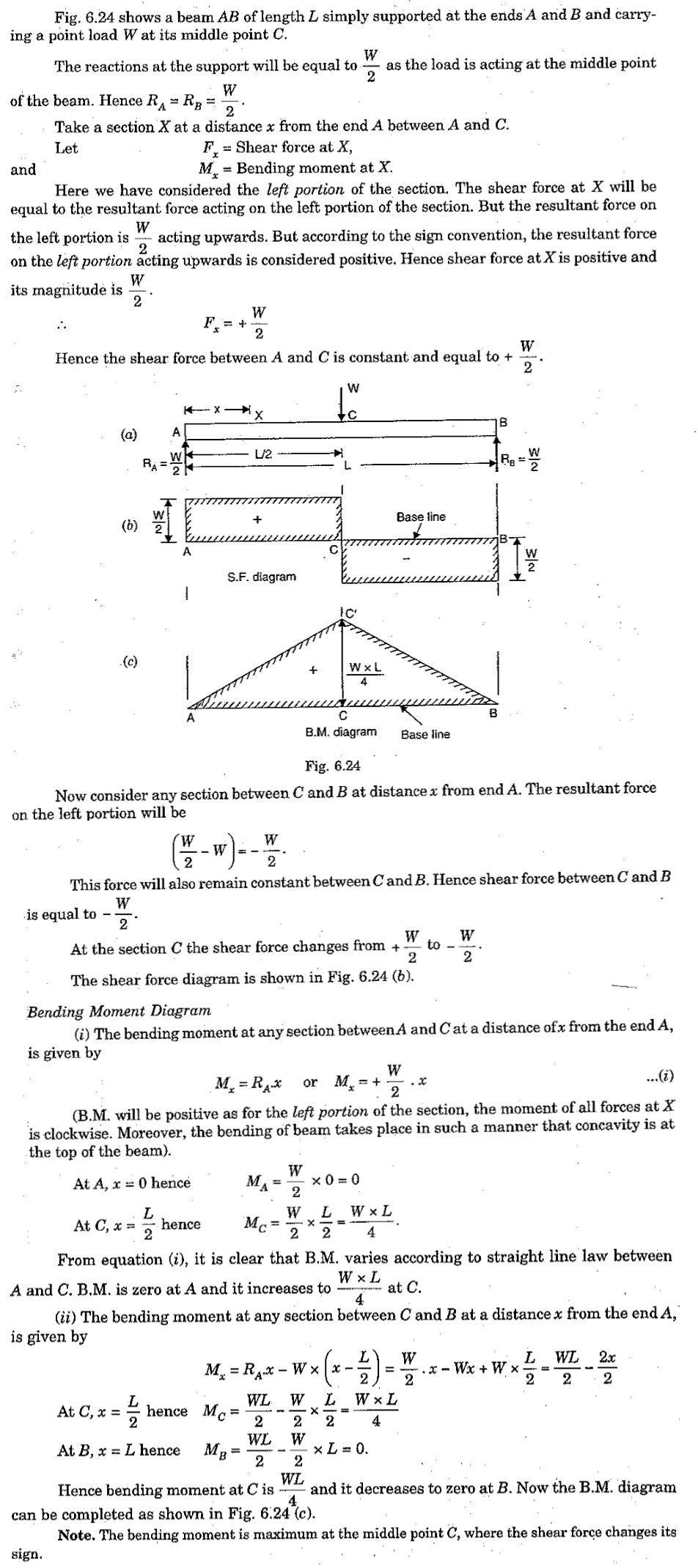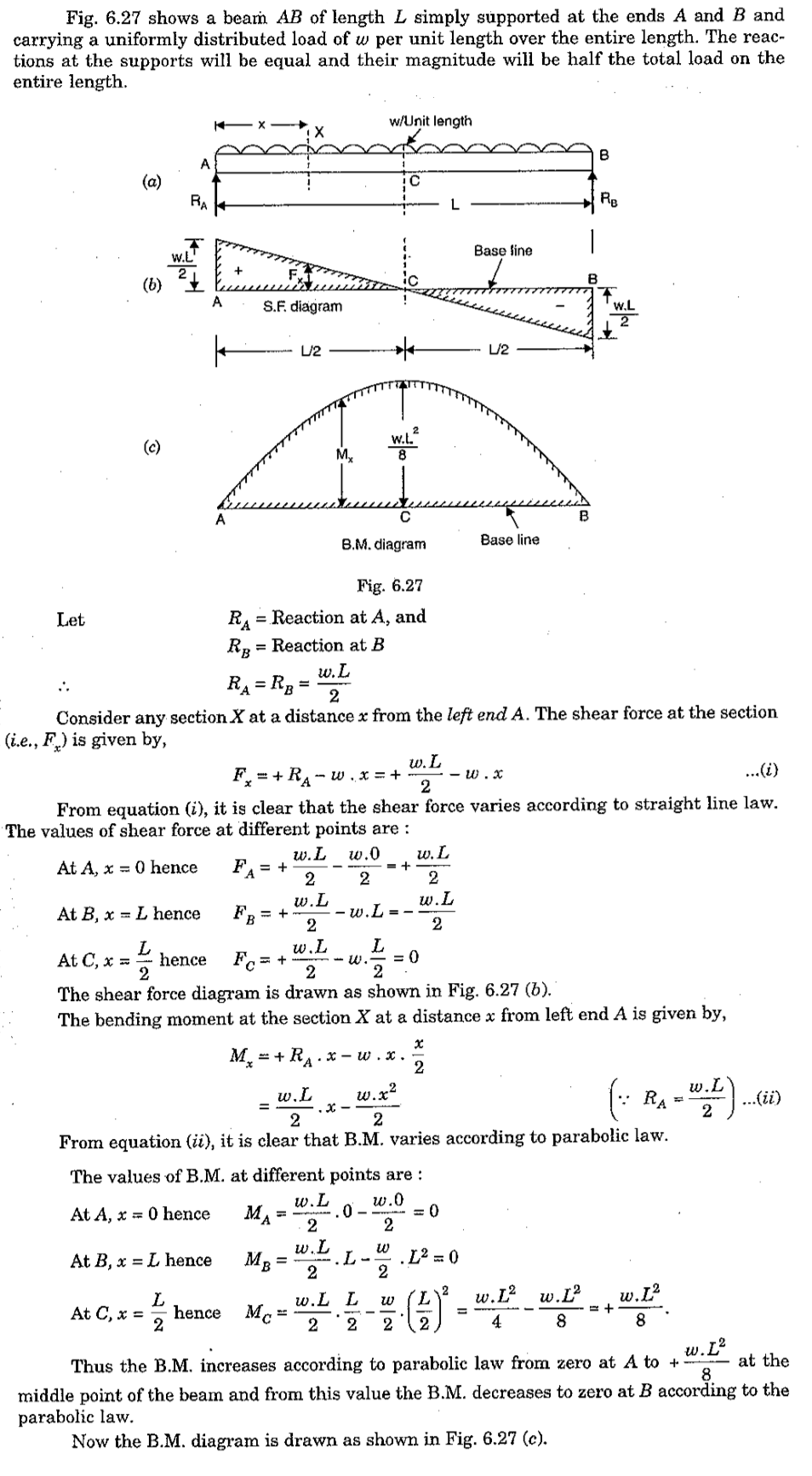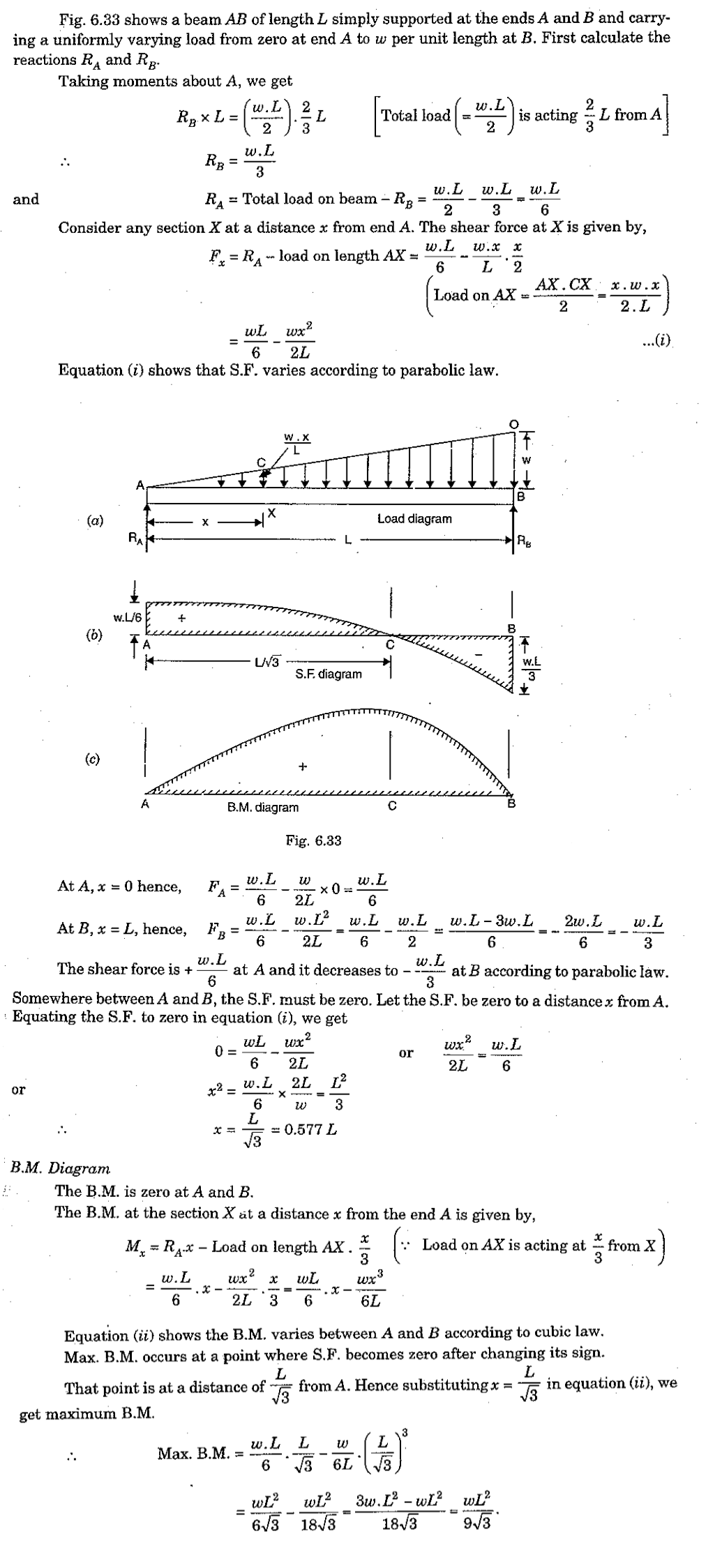In the previous Article, we have discussed the Shear Force and bending moment diagram for Cantilever Beam. In this article, we are going to discuss the Shear Force and bending moment diagram for Simply Supported Beam.

Shear force and Bending moment diagram in beams can be useful to determine the maximum absolute value of the shear force and the bending moment of the beams with respect to the relative load. Before we are drawing the Shear force and Bending moment diagram, we must know different type of beams and different type of loads, reaction forces acting on them.
Steps to draw Shear force and Bending moment diagrams
In SFD and BMD diagrams Shear force or Bending moment represents the ordinates, and the Length of the beam represents the abscissa.
- Consider the left or the right portion of the section.
- Add the forces(including reactions) normal to the beam on the one of the portion.
- If the right portion of the section is chosen, then the force acting downwards is positive and the force acting upwards is negative.
- If the Left portion of the section is chosen, then the force acting downwards is negative and the force acting upwards is positive.
- The positive values of Shear force and Bending moment are plotted above the baseline the negative values are plotted below the baseline.
- Shear force diagram will increase or decrease suddenly. I.e., By vertical straight line at a section where there is a vertical point load.
- The Shear force between any two vertical loads will be constant. And hence the shear force between the two vertical loads will be horizontal.
- The bending moment at the two ends of the simply supported beam and at the free end of a cantilever will be zero.
Shear force and Bending moment Diagram for a Simply Supported beam with a Point load at the midpoint

Shear force and Bending moment Diagram for a Simply Supported Beam with a Uniformly distributed load

Shear force and Bending moment Diagram for a Simply Supported Beam with a Uniformly varying load from 0 (Zero) at one end to the w (Weight) at the other end

Reference: Textbook of Strength of Materials by Rk Bansal.

The beams for the given questions are not indicated
Can you specify in more detail what is missing?